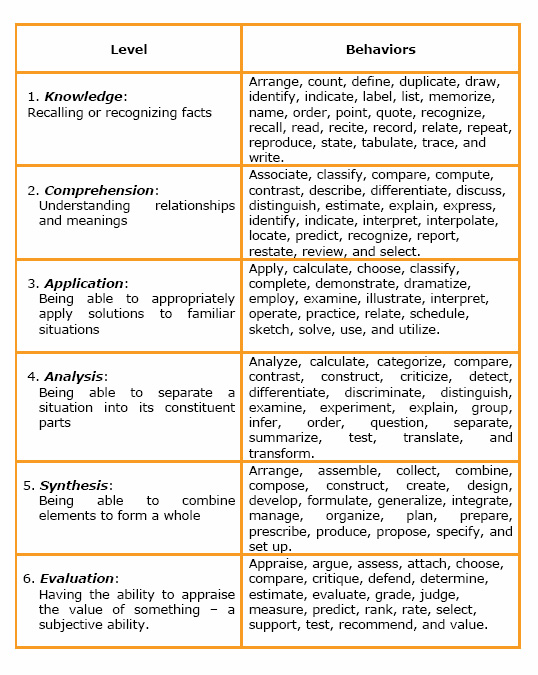Learning Objectives
From Learning and training wiki
| Clear statement about the outcome of a training course, which informs what the trainee will be able to do or know after the training. They are presented from the trainee’s perspective, expressing as a target the improvement of competencies, which will enhance job performance. The performance signals to the trainees what must be done or learned in very specific terms.
The learning objectives are the starting point of the development of a learning activity. They constitute an essential element in the preparation of a training course. Defining adequate learning objectives can be one of the most time-consuming tasks in training design. Even though they may be expressed in a single paragraph of a few lines, they are the foundation of any training course as they relate to the overall training goal. Characteristics:
The initial statement (or bullet list) of the course learning objectives constitutes the primary objectives (First Level). These first level objectives may have other objectives subordinated to them (Second Level Objectives), which are supporting or enabling objectives. The First Level Objectives give the trainees an overall guide to what they will accomplish in the course whereas the Second Level Objectives are more content specific, telling exactly what they need to do. First and second level objectives are particularly used when the course content is divided into modules or units. Thus, there will be an overall objective for the course (First Level) and other subordinated objectives in each of the modules/units (Second Level) that support and directly enable the achievement of the overall course objective. In case modules/units are further divided into sections, these sections will also have learning objectives (third level), which are even more specific than the ones in the previous levels. [1]See also: A.D.D.I.E Model, Assessment, Instructional Design (ID) |
General Guidelines
Quick CheckWhen writing learning objective statements, ask yourself the following questions:
Job Aids
|
| The following documents contain examples of learning goals and objectives developed according to the instructions: |
| General learning goals and objectives developed for different courses outside UNITAR. | |
| Learning objectives developed for UNITAR course on Urban Sanitation. | |
| Learning objectives developed for UNITAR / UNDP course on Democratic Governance. |
| Below you have the link to further resources which deal with some of the concepts related to learning objectives: |
| Link | Content |
|---|---|
| Assessments in e-Learning | This slideshow presents some of the basic concepts related to the development of good learning objectives and to the importance of measuring learning. It also presents different type of assessment. |
| Why learning goals are necessary for success? (Video, 5 min) | Watch this short 5 minute video, and learn about learning goals and how they can improve your instruction. |
| Learning and Retention: How to Improve Content Retention in Training (Video, 3 min) | The content is meant to help instructors question whether they are setting up their courses for short term or long term results. It discusses content retention strategies and the drawbacks of only teaching for short term retention. This video touches on the importance to think about training for long term memory retention. |
References
- ↑ www.depts.washington.edu(18 March 2008), www.utmem.edu(18 March 2008); Hassel-Corbiell, Ribes, Developing Training Courses: a technical writer’s guide to instructional design and development, Learning Edge Publishing, 2006; Phillips, Jack J. & Stone, Ron D., How to Measure Training Results, McGraw-Hill, 2002; Piskurich, George M., Rapid Instructional Design – Learning ID Fast and Right, John Wiley & Sons, Inc., 2006; Reiser, Robert A. & Dempsey, John V., Trends and Issues in Instructional Design and Technology, Pearson Prentice Hall, 2007; Stolovitch, Harold D. & Keeps, EricaJ., Telling Ain’t Training, ASTD Press, 2002. Woolcock, Michael J.V., Constructing a Syllabus, The Harriet Sheridan Center for Teaching and Learning, Brown University, 2006.
- ↑ Hassel-Corbiell, Ribes, Developing Training Courses: a technical writer’s guide to instructional design and development, Learning Edge Publishing, 2006.


